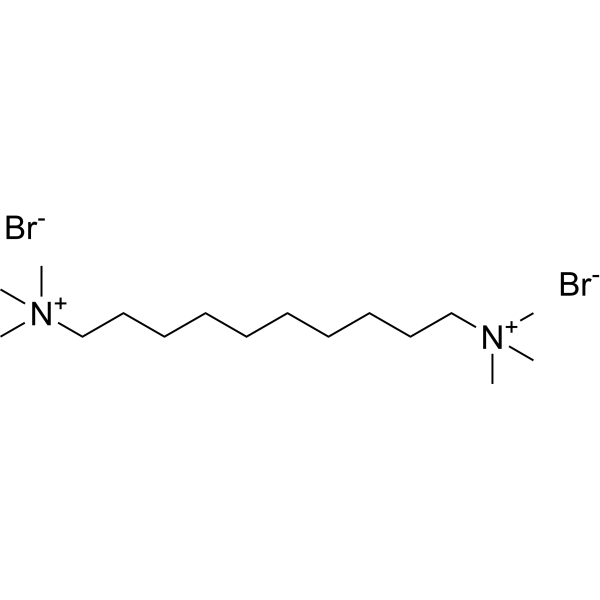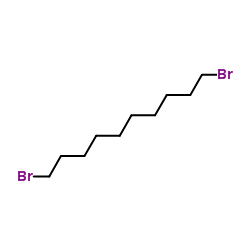541-22-0
| Name | decamethonium bromide |
|---|---|
| Synonyms |
dekamethoniumbromid
Decane-1,10-bis(trimethylammonium Bromide) decacuran syncurine N,N,N,N',N',N'-Hexamethyl-1,10-decanediaminium dibromide decamethoniumdibromide hexa-N-methyl-N,N'-decanediyl-di-ammonium,dibromide N,N,N,N',N',N'-Hexamethyldecane-1,10-diaminium dibromide decamethylenebis[trimethylammonium bromide] 1,10-Decanediaminium, N,N,N,N',N',N'-hexamethyl-, dibromide Decamethylene bis(trimethylammonium bromide) (Decane-1,10-bis(trimethylammonium bromide) MFCD00011779 Hexa-N-methyl-N,N'-decandiyl-di-ammonium,Dibromid Decamethonium dibromide Decamethylene bis(trimethylammonium bromide) 1,10-Decanediaminium, N,N,N,N,N,N-hexamethyl-, bromide (1:2) Decamethonium Bromide EINECS 208-772-2 UNII-55C6RK944K decamethylene-1,10-bistrimethylammoniumdibromide Decamethonium (Bromide) |
| Description | Decamethonium Bromide is a nicotinic AChR partial agonist and neuromuscular blocking agent.Target: nAChRDecamethonium (Syncurine) is a depolarizing muscle relaxant or neuromuscular blocking agent, and is used in anesthesia to induce paralysis. Decamethonium, which has a short action time, is similar to acetylcholine and acts as a partial agonist of the nicotinic acetylcholine receptor. In the motor endplate, it causes depolarization, preventing further effects to the normal release of acetylcholine from the presynaptic terminal, and therefore preventing the neural stimulus from affecting the muscle. In the process of binding, decamethonium actually activates (depolarizes) the motor endplate, but since the decamethonium itself is not degraded, the membrane remains depolarized and unresponsive to normal acetylcholine release [1]. |
|---|---|
| Related Catalog | |
| References |
| Melting Point | 263-267 °C(lit.) |
|---|---|
| Molecular Formula | C16H38Br2N2 |
| Molecular Weight | 418.294 |
| Exact Mass | 416.140167 |
| Stability | Stable. Incompatible with strong oxidizing agents. |
CHEMICAL IDENTIFICATION
HEALTH HAZARD DATAACUTE TOXICITY DATA
|
| Symbol |

GHS06 |
|---|---|
| Signal Word | Danger |
| Hazard Statements | H301-H315-H319-H335 |
| Precautionary Statements | P261-P301 + P310-P305 + P351 + P338 |
| Personal Protective Equipment | Eyeshields;Faceshields;Gloves;type P2 (EN 143) respirator cartridges |
| Hazard Codes | T |
| Risk Phrases | R25;R36/37/38 |
| Safety Phrases | S26-S45 |
| RIDADR | UN 2811 6.1/PG 3 |
| WGK Germany | 3 |
| RTECS | BP5950000 |
| Packaging Group | III |
| Hazard Class | 6.1(b) |
|
~53% 
541-22-0 |
| Literature: Tischer, Maximilian; Sologub, Ludmilla; Pradel, Gabriele; Holzgrabe, Ulrike Bioorganic and Medicinal Chemistry, 2010 , vol. 18, # 9 p. 2998 - 3003 |
|
~0% 
541-22-0 |
| Literature: Baer, Andrew J.; Macartney, Donal H. Organic and Biomolecular Chemistry, 2005 , vol. 3, # 8 p. 1448 - 1453 |



